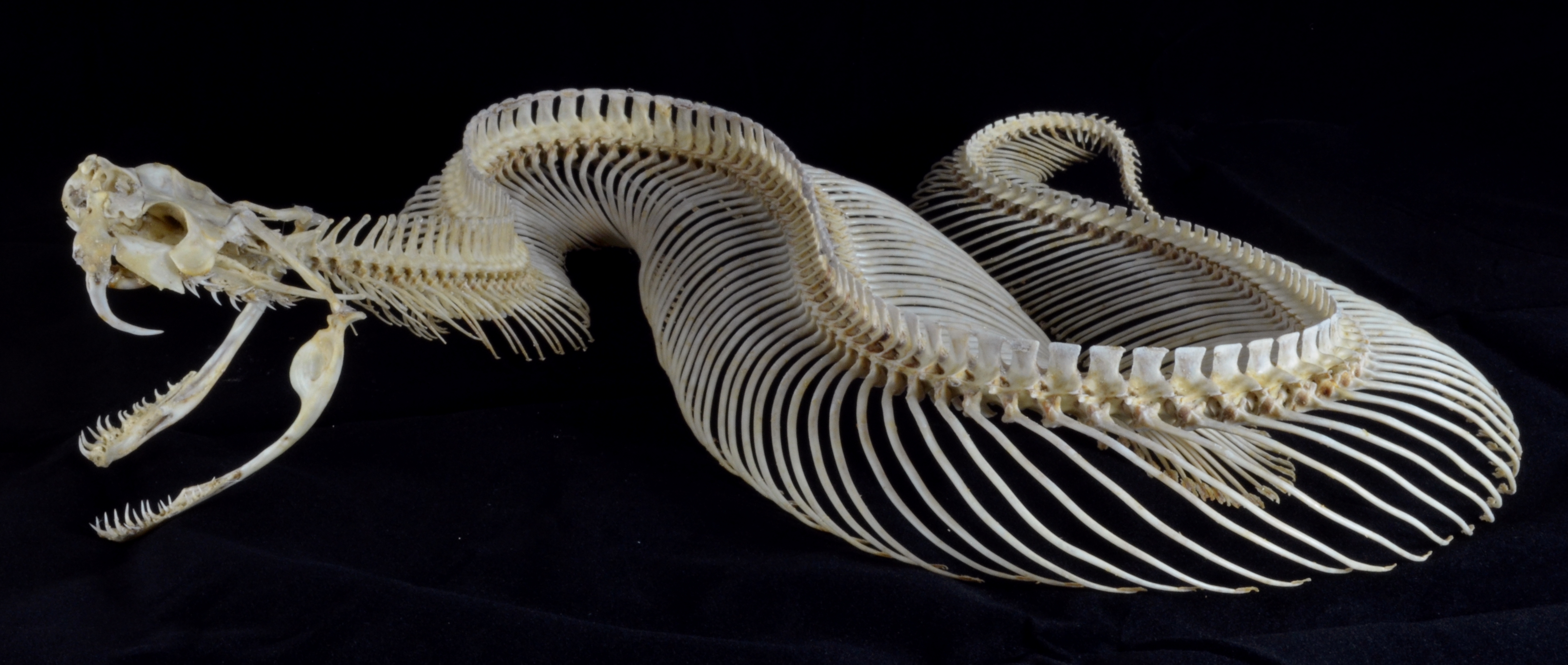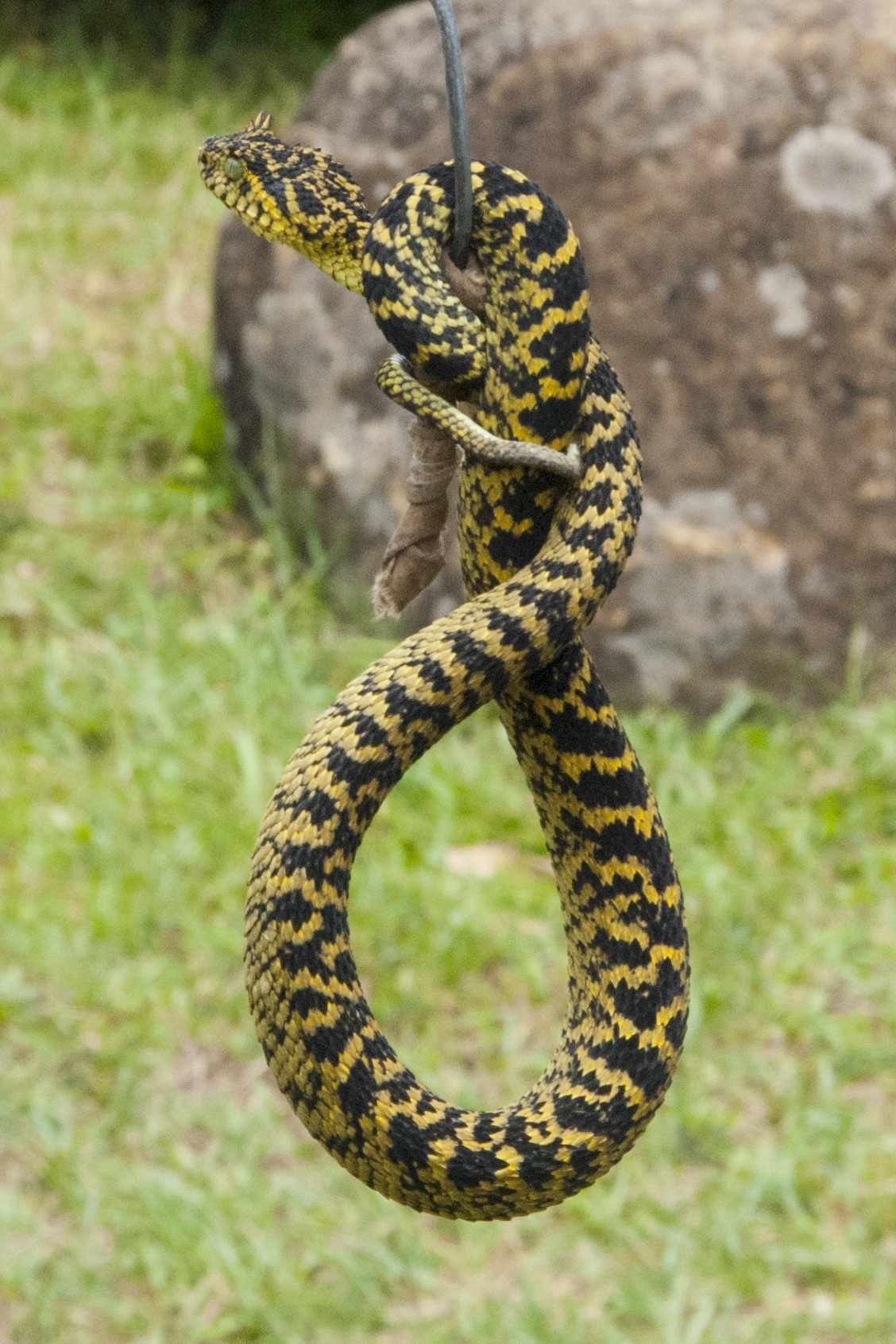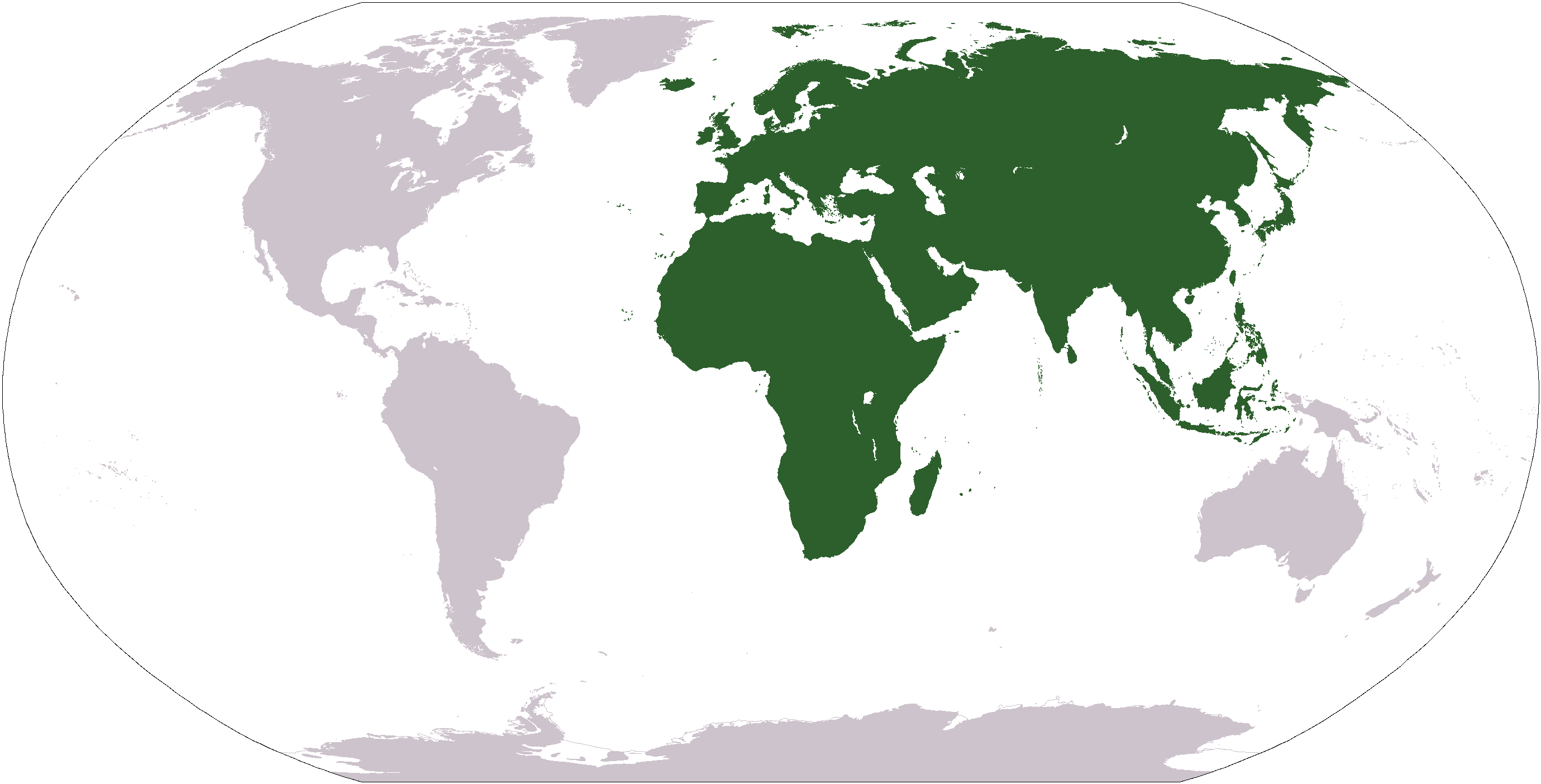|
Viperinae
Viperinae, or viperines, are a subfamily of vipers endemic to Europe, Asia and Africa. They are distinguished by their lack of the heat-sensing pit organs that characterize their sister group, the subfamily Crotalinae. Currently, 13 genera are recognized. Most are tropical and subtropical, although one species, '' Vipera berus'', even occurs within the Arctic Circle. Like all vipers, they are venomous. The common names "pitless vipers", "true vipers", "Old World vipers",Mallow D, Ludwig D, Nilson G. 2003. ''True Vipers: Natural History and Toxinology of Old World Vipers''. Malabar, Florida: Krieger Publishing Company, Malabar. 359 pp. . and "true adders"U.S. Navy. 1991. ''Poisonous Snakes of the World''. US Govt. New York: Dover Publications Inc. 203 pp. . all refer to this group. Description Members of this subfamily range in size from '' Bitis schneideri'', which grows to a maximum total length (body and tail) of , to the Gaboon viper, which reaches a maximum total length of ... [...More Info...] [...Related Items...] OR: [Wikipedia] [Google] [Baidu] |
Gaboon Viper
The Gaboon viper (''Bitis gabonica''), also called the Gaboon adder, is a large and highly venomous viper species found in the rainforests and savannas of sub-Saharan Africa.McDiarmid RW, Campbell JA, Touré T. 1999. ''Snake Species of the World: A Taxonomic and Geographic Reference, Volume 1''. Herpetologists' League. 511 pp. (series). (volume). It is the largest member of the genus ''Bitis.'' Like all other vipers, it is venomous, Spawls S, Branch B. 1995. ''The Dangerous Snakes of Africa''. Ralph Curtis Books. Dubai: Oriental Press. 192 pp. and it has the longest fangs of any venomous snake – up to in length – and the highest venom yield of any snake. No subspecies are recognized. Taxonomy The Gaboon viper was described in 1854 as ''Echidna gabonica''. Lenk ''et al.'' (1999) discovered genetic differences between the two conventionally recognized subspecies of ''B. g. gabonica'' and ''B. g. rhinoceros''. According to their research, these two subspecies a ... [...More Info...] [...Related Items...] OR: [Wikipedia] [Google] [Baidu] |
Viperidae
Vipers are snakes in the family Viperidae, found in most parts of the world, except for Antarctica, Australia, Hawaii, Madagascar, New Zealand, Ireland, and various other isolated islands. They are venomous snake, venomous and have long (relative to non-vipers), hinged fangs that permit deep envenomation of their prey. Three subfamilies are currently recognized. They are also known as viperids. The name "viper" is derived from the Latin word ''vipera'', -''ae'', also meaning viper, possibly from ''vivus'' ("living") and ''parere'' ("to beget"), referring to the trait viviparity (giving live birth) common in vipers like most of the species of Boidae. The earliest known vipers are believed to have diverged from the rest of the clade Caenophidia in the early Eocene. Description All viperids have a pair of relatively long Solenoglypha#Solenoglyph, solenoglyphous (hollow) fangs that are used to inject venom from glands located towards the rear of the upper jaws, just behind the ey ... [...More Info...] [...Related Items...] OR: [Wikipedia] [Google] [Baidu] |
Infrared Sensing In Snakes
The ability to sense infrared thermal radiation evolved independently in three different groups of snakes, consisting of the families of Boidae (boas), Pythonidae (pythons), and the subfamily Crotalinae (pit vipers). What is commonly called a pit organ allows these animals to essentially "see" radiant heat at wavelengths between 5 and 30 μm. The more advanced infrared sense of pit vipers allows these animals to strike prey accurately even in the absence of light, and detect warm objects from several meters away. It was previously thought that the organs evolved primarily as prey detectors, but recent evidence suggests that it may also be used in thermoregulation and predator detection, making it a more general-purpose sensory organ than was supposed.Greene HW. 1992. The ecological and behavioral context for pitviper evolution. ''In'' Campbell JA, Brodie ED Jr. 1992. Biology of the Pitvipers. Texas: Selva. 467 pp. 17 plates. . Phylogeny and evolution The facial pit underwe ... [...More Info...] [...Related Items...] OR: [Wikipedia] [Google] [Baidu] |
Atheris
''Atheris'' is a genus of Viperinae, vipers known as bush vipers.Spawls S, William Roy Branch, Branch B (1995). ''The Dangerous Snakes of Africa''. Ralph Curtis Books. Dubai: Oriental Press. 192 pp. . They are found only in tropical Sub-Saharan Africa, subsaharan Africa (excluding southern Africa) and many species have isolated and fragmented Species distribution, distributions due to their confinement to rain forests.Mallow D, Ludwig D, Nilson G (2003). ''True Vipers: Natural History and Toxinology of Old World Vipers''. Malabar, Florida: Krieger Publishing Company. 359 pp. . Like all other vipers, they are venomous snake, venomous. In an example of convergent evolution, they show many similarities to the arboreal Crotalinae, pit vipers of Asia and South America. Seventeen species are currently recognized. Description They are relatively small in size, with adults ranging in total length (body + tail) from for ''Atheris katangensis, A. katangensis'' to a maximum of for ''Ather ... [...More Info...] [...Related Items...] OR: [Wikipedia] [Google] [Baidu] |
Bitis Schneideri
:''Common names: Namaqua dwarf adder, Mallow D, Ludwig D, Nilson G (2003). ''True Vipers: Natural History and Toxinology of Old World Vipers''. Malabar, Florida: Krieger Publishing Company. 359 pp. . Spawls S, Branch B (1995). ''The Dangerous Snakes of Africa''. Dubai: Ralph Curtis Books. Oriental Press. 192 pp. . spotted dwarf adder, Schneider's adder.'' ''Bitis schneideri'' is a species of venomous snake in the subfamily Viperinae of the family Viperidae. The species is native to a small coastal region that straddles the border between Namibia and South Africa. ''B. schneideri'' is the smallest species in the genus ''Bitis'' and possibly the world's smallest viper. There are no subspecies that are currently recognized as being valid. Etymology The specific name, ''schneideri'', was given by Oskar Boettger in honor of "''Dr. Oskar Schneider in Dresden'' ", a friend of Boettger. Oskar Schneider (1841–1903) was a conchologist. Description With an average total length (incl ... [...More Info...] [...Related Items...] OR: [Wikipedia] [Google] [Baidu] |
Venomous Snake
''Venomous snakes'' are species of the suborder Serpentes that are capable of producing venom, which they use for killing prey, for defense, and to assist with digestion of their prey. The venom is typically delivered by injection using hollow or grooved fangs, although some venomous snakes lack well-developed fangs. Common venomous snakes include the families Elapidae, Viperidae, Atractaspididae, and some of the Colubridae. The toxicity of venom is mainly indicated by murine , while multiple factors are considered to judge the potential danger to humans. Other important factors for risk assessment include the likelihood that a snake will bite, the quantity of venom delivered with the bite, the efficiency of the delivery mechanism, and the location of a bite on the body of the victim. Snake venom may have both neurotoxic and hemotoxic properties. There are about 600 venomous snake species in the world. Evolution The evolutionary history of venomous snakes can be traced back ... [...More Info...] [...Related Items...] OR: [Wikipedia] [Google] [Baidu] |
Crotalinae
The Crotalinae, commonly known as pit vipers,Mehrtens JM (1987). ''Living Snakes of the World in Color''. New York: Sterling Publishers. 480 pp. . or pit adders, are a subfamily of vipers found in Asia and the Americas. Like all other vipers, they are venomous. They are distinguished by the presence of a heat-sensing pit organ located between the eye and the nostril on both sides of the head. Currently, 23 genera and 155 species are recognized: These are also the only viperids found in the Americas. The groups of snakes represented here include rattlesnakes, lanceheads, and Asian pit vipers. The type genus for this subfamily is '' Crotalus'', of which the type species is the timber rattlesnake, ''C. horridus''. These snakes range in size from the diminutive hump-nosed viper, '' Hypnale hypnale'', that grows to a typical total length (including tail) of only , to the bushmaster, '' Lachesis muta'', a species known to reach a maximum total length of in length. This subf ... [...More Info...] [...Related Items...] OR: [Wikipedia] [Google] [Baidu] |
Sister Group
In phylogenetics, a sister group or sister taxon, also called an adelphotaxon, comprises the closest relative(s) of another given unit in an evolutionary tree. Definition The expression is most easily illustrated by a cladogram: Taxon A and taxon B are sister groups to each other. Taxa A and B, together with any other extant or extinct descendants of their most recent common ancestor (MRCA), form a monophyletic group, the clade AB. Clade AB and taxon C are also sister groups. Taxa A, B, and C, together with all other descendants of their MRCA form the clade ABC. The whole clade ABC is itself a subtree of a larger tree which offers yet more sister group relationships, both among the leaves and among larger, more deeply rooted clades. The tree structure shown connects through its root to the rest of the universal tree of life. In cladistic standards, taxa A, B, and C may represent specimens, species, genera, or any other taxonomic units. If A and B are at the same taxono ... [...More Info...] [...Related Items...] OR: [Wikipedia] [Google] [Baidu] |
Arboreal Locomotion
Arboreal locomotion is the animal locomotion, locomotion of animals in trees. In habitats in which trees are present, animals have evolution, evolved to move in them. Some animals may scale trees only occasionally (scansorial), but others are exclusively arboreal. The habitats pose numerous mechanical challenges to animals moving through them and lead to a variety of anatomical, behavioral and ecological consequences as well as variations throughout different species.Matt Cartmill, Cartmill, M. (1985). "Climbing". pp. 73–88 ''In'': Hildebrand, Milton; Bramble, Dennis M.; species:Karel Frederik Liem, Liem, Karel F.; David B. Wake, Wake, David B. (editors) (1985). ''Functional Vertebrate Morphology''. Cambridge, Massachusetts: Harvard University Press, Belknap Press. 544 pp. . Furthermore, many of these same principles may be applied to climbing without trees, such as on rock piles or mountains. Some animals are exclusively arboreal in habitat, such as tree snails. Biomechanic ... [...More Info...] [...Related Items...] OR: [Wikipedia] [Google] [Baidu] |
Terrestrial Animal
Terrestrial animals are animals that live predominantly or entirely on land (e.g. cats, chickens, ants, most spiders), as compared with aquatic animals, which live predominantly or entirely in the water (e.g. fish, lobsters, octopuses), and semiaquatic animals, which rely on both aquatic and terrestrial habitats (e.g. platypus, most amphibians). Some groups of insects are terrestrial, such as ants, butterflies, earwigs, cockroaches, grasshoppers and many others, while other groups are partially aquatic, such as mosquitoes and dragonflies, which pass their larval stages in water. Alternatively, terrestrial is used to describe animals that live on the ground, as opposed to arboreal animals that live in trees. Ecological subgroups The term "terrestrial" is typically applied to species that live primarily on or in the ground, in contrast to arboreal species, who live primarily in trees, even though the latter are actually a specialized subgroup of the terre ... [...More Info...] [...Related Items...] OR: [Wikipedia] [Google] [Baidu] |
Old World
The "Old World" () is a term for Afro-Eurasia coined by Europeans after 1493, when they became aware of the existence of the Americas. It is used to contrast the continents of Africa, Europe, and Asia in the Eastern Hemisphere, previously thought of by the Europeans as comprising the entire world, with the "New World", a term for the newly encountered lands of the Western Hemisphere, particularly the Americas. Etymology In the context of archaeology and world history, the term "Old World" includes those parts of the world which were in (indirect) cultural contact from the Bronze Age onwards, resulting in the parallel development of the early civilizations, mostly in the temperate zone between roughly the 45th and 25th parallels north, in the area of the Mediterranean, including North Africa. It also included Mesopotamia, the Persian plateau, the Indian subcontinent, China, and parts of Sub-Saharan Africa. These regions were connected via the Silk Road trade route, and ... [...More Info...] [...Related Items...] OR: [Wikipedia] [Google] [Baidu] |
Arctic Circle
The Arctic Circle is one of the two polar circles, and the northernmost of the five major circle of latitude, circles of latitude as shown on maps of Earth at about 66° 34' N. Its southern counterpart is the Antarctic Circle. The Arctic Circle marks the southernmost latitude at which, on the winter solstice in the Northern Hemisphere, the Sun does not rise all day, and on the Northern Hemisphere's summer solstice, the Sun does not set. These phenomena are referred to as polar night and midnight sun respectively, and the further north one progresses, the more obvious this becomes. For example, in the Russian port city of Murmansk, three degrees north of the Arctic Circle, the Sun stays below the horizon for 20 days before and after the winter solstice, and above the horizon for 20 days before and after the summer solstice. The position of the Arctic Circle is not fixed and currently runs north of the Equator. Its latitude depends on Earth's axial tilt, which axial precession, ... [...More Info...] [...Related Items...] OR: [Wikipedia] [Google] [Baidu] |






